Table of Contents
- Internal links may pass PageRank indirectly – prioritize internal linking from PR hits to key pages.
- Anchor text context, including surrounding words and formatting, directly impacts link quality.
- Authorship signals and authority metrics confirm the growing SEO value of thought leadership content.
- Link freshness, click data, and site visibility influence link weight, supporting digital PR over static link buys.
- Repeated links from the same domain lose value, so focus on diverse, authoritative backlinks for ranking impact.
As most are probably aware, there was a MASSIVE leak of Google algorithm information found here.
Numerous posts and analyses have been made about this information, and I’m sure more will follow. But for a primer, I highly recommend checking out Mike King’s post on IPullRank and Rand Fishkin’s post on SparkToro since they were the first to report on the matter.
With the help of the BuzzStream dev team, I’ve reviewed the documentation to extract important takeaways about backlinks. I plan on updating this as we dig more.
Backlinks aren’t the only piece of the ranking puzzle, but having more supportive documentation around link building is excellent.
For a bit of a spoiler, everything points to how powerful digital PR can be.
But, let me show you everything I can about what we can learn about link building (and digital PR) from the Google Algorithm leak.

1. Power of Internal Links
One piece of the documentation talks about how documents can link indirectly, which may have implications for internal linking, digital PR and SEO strategies.
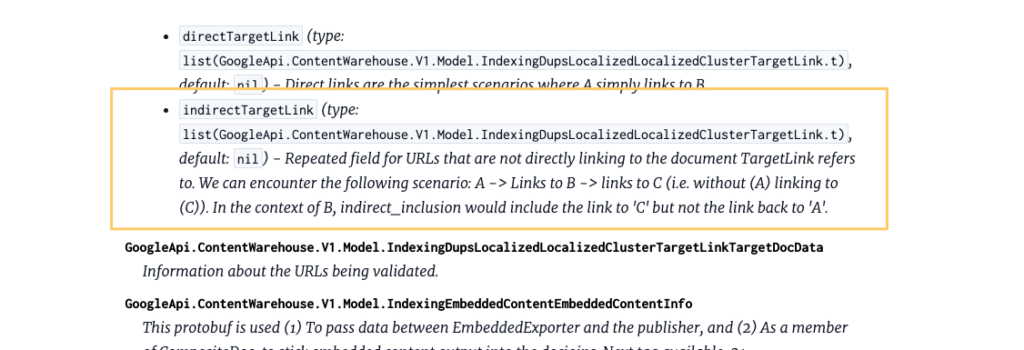
This indicates that the indexing and ranking process may consider indirect document relationships.
For instance, if Document A has high authority and links to Document B, and then Document B links to Document C, the indirect link from A (through B) to C can contribute to the SEO value of Document C, even though A does not link directly to C.
So, in the digital PR realm, this suggests that you could get a high-authority link to a piece of content and then internally link that piece of content to your money page to pass that same authority through.
I posed this exact question to LinkedIn users, and most seem to agree with this sentiment.
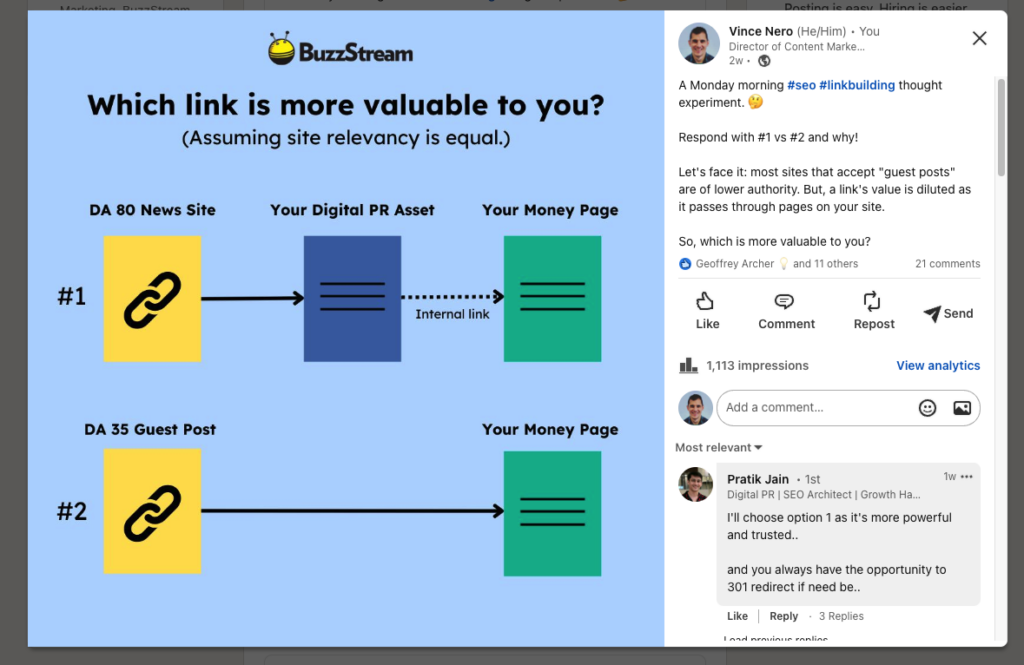
It may be evident that internal links are essential, but I’m not sure people appreciate precisely how much.
Nate Matherson of Positional discusses the power of internal links in our podcast episode (and his thoughts are backed up by this documentation).
Cyrus Shepard’s study provides excellent advice on the exact number and types of internal links needed to really have an impact.
2. Quality and Authority Measurements
Quality and authority have always been discussed in link building, but seeing some of these in action is excellent.
Here’s a quick look at some of the mentions for both.
Quality
According to the documentation, an anchor’s quality is measured by its ‘locality’ and ‘bucket.’
These localities and buckets likely refer to a categorization system Google uses to identify anchors.
This indicates that backlinks from specific sources are valued differently based on the context (and relevancy) of the link source to the target domain.
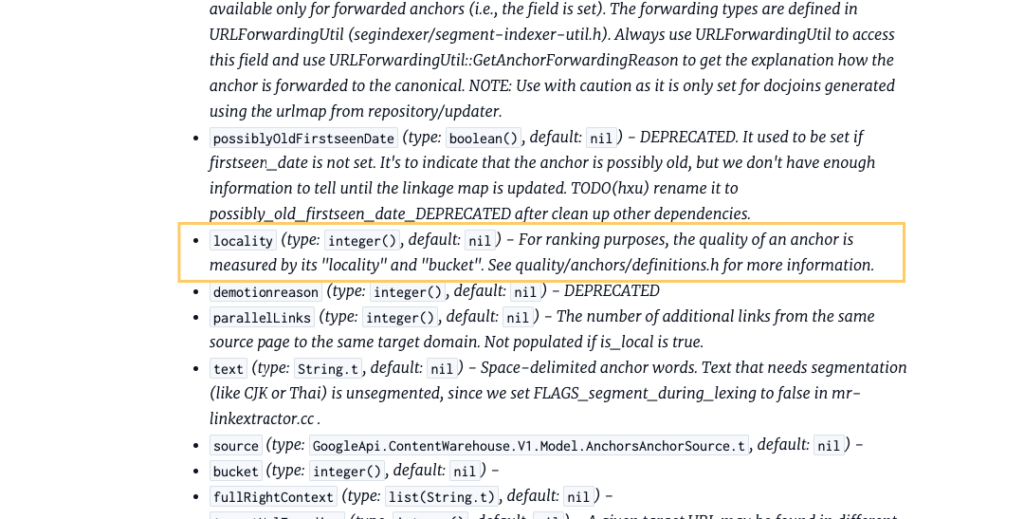
Furthermore, they mention source quality for anchors, suggesting that backlinks from reputable and high-quality sites carry more SEO weight.
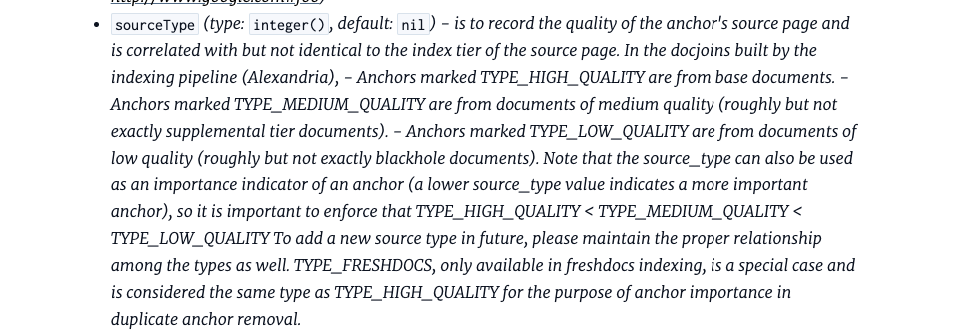
For example, anchors from high-quality base documents (TYPE_HIGH_QUALITY) are more valuable than those from medium or low-quality documents.
Authority
Lastly, a confidence and authority metric is mentioned, highlighting that a page can boost the authority of the linked site.
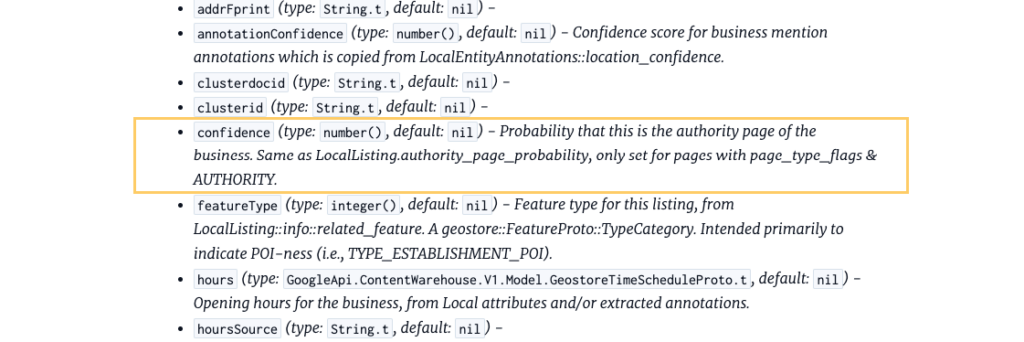
This should be nothing new for link builders and digital PRs.
We’ve covered this extensively in our link quality and relevancy posts, but it’s important to reiterate the importance of link builders and digital PRs.
For my money, digital PR is more effective today for building links naturally from high-quality, authoritative sites.
There are options for link builders, but these are mainly paid options, which isn’t reflected at all in the leaked documentation but is a potential risk.
3. Anchor Text Context
Google’s document mentions the significance of anchor text and its context.
The text, including capitalization and even punctuation, is considered.
Then, they mention the “hash of terms” near the anchor.

This amounts to the words surrounding the anchor. (Google has actually said this in their links documentation, but it’s great to see it backed up.)
You can quickly gauge this with Ahrefs’ Site Explorer, which gives you the anchor text of a link and the surrounding text.
So, a link to BuzzStream is much more effective if it includes relevant contextual terms like “email outreach software.”
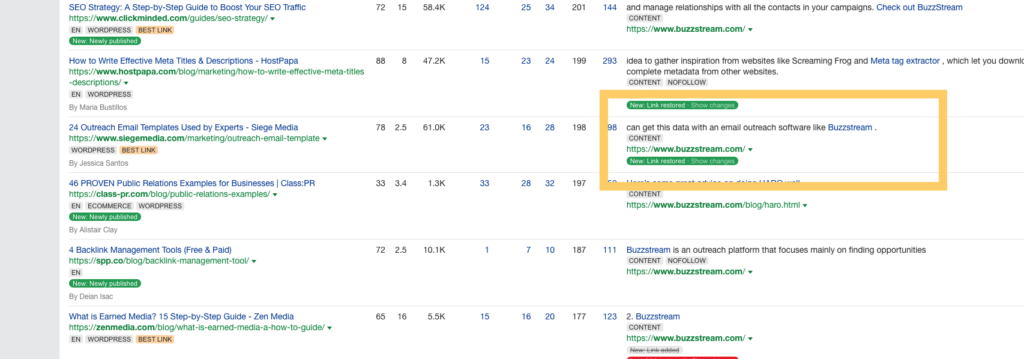
If you can control the anchor text of a backlink, do your best to control it.
But this gets into the idea of branding your business or site.
4. Authorship Is Recognized
The concept of Authorship appears to be very important.
I even discuss it in my Helpful Content post and when evaluating guest posting sites.
Google considers and tracks authors. You can see many instances of authors mentioned in the documentation.
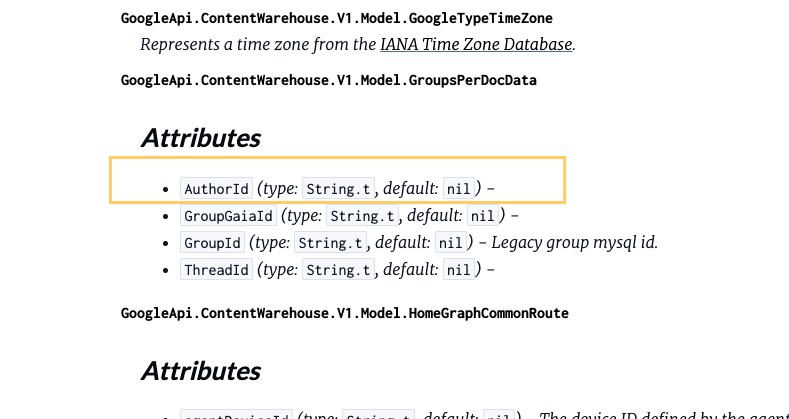
But again, just because an author is listed on a page doesn’t mean the site is worthwhile.
Instead, Google most likely looks at how the author is associated with the site or topics they are writing about on the site and web.
The more closely associated the author is with the topic they are writing about, the more it would make sense to value that page.
For example, I Googled Vince Nero and saw my name associated with keywords like “content marketing,” “SEO,” and BuzzStream.
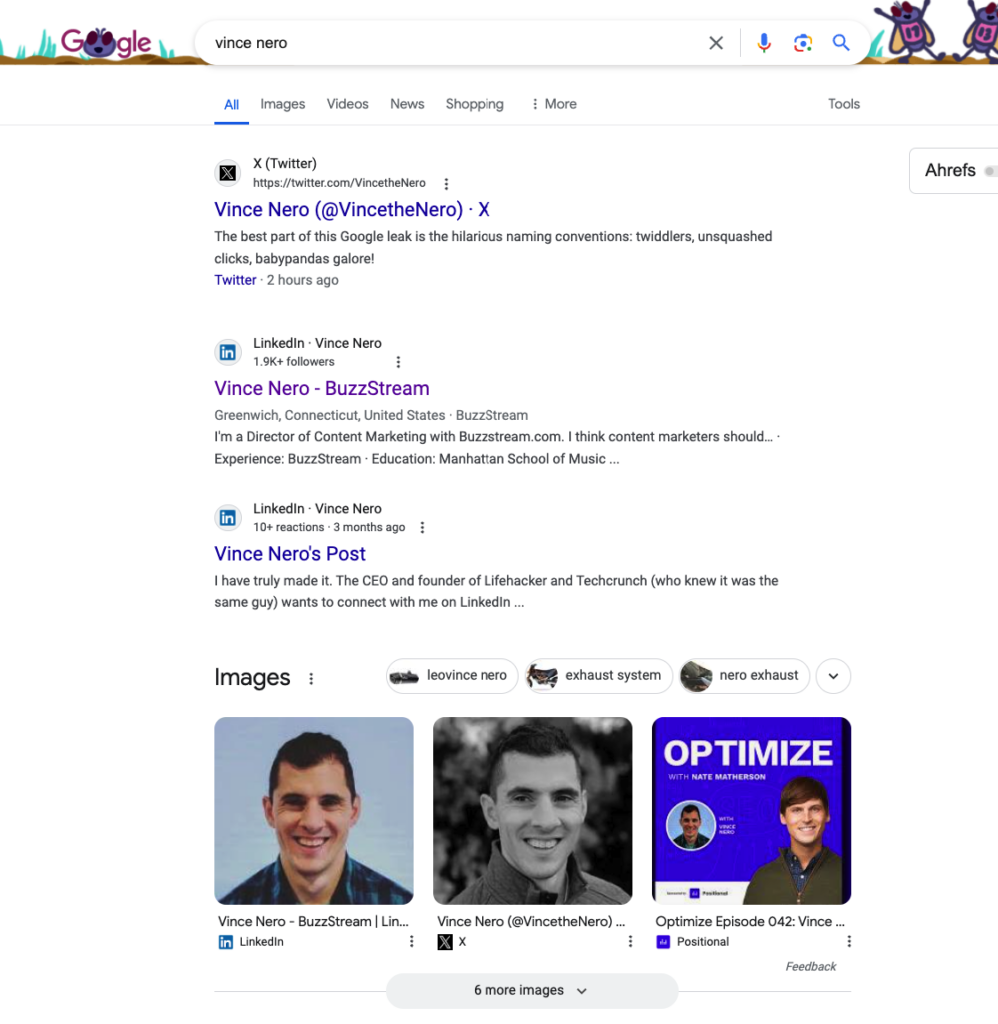
So, if I wanted to write about baseball, I’d have to do a much better job associating myself with that terminology.
This could be done by guest blogging, podcasting, or other forms of social media.
5. Redundant Anchors Are Dropped
Based on the documentation, redundant anchors from the same domain are often dropped to avoid spam and ensure the uniqueness of backlinks.
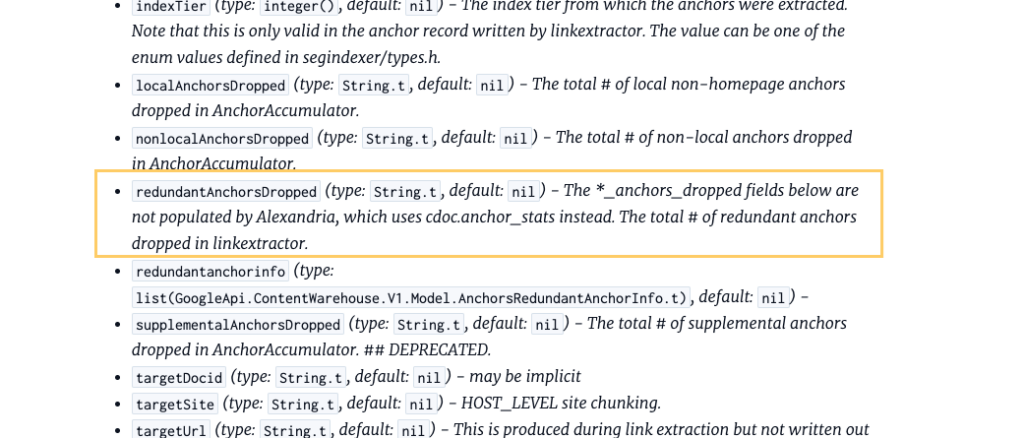
So, is it a bad thing to get multiple links from the same domain?
No, but there appears to be a reasonable cutoff point at which additional links will not further impact ranking.
This also points to getting diverse backlinks from multiple high-quality sources to help with ranking rather than just repeatedly leaning on the same source.
That said, there’s nothing wrong with getting links from high-authority domains where your customers spend their time if ranking isn’t the goal. You can send quality direct traffic to your site.
SEOs can gauge the impact by looking at referral traffic from a specific source on Google Analytics.
For instance, here’s a look at a referral sources for BuzzStream:
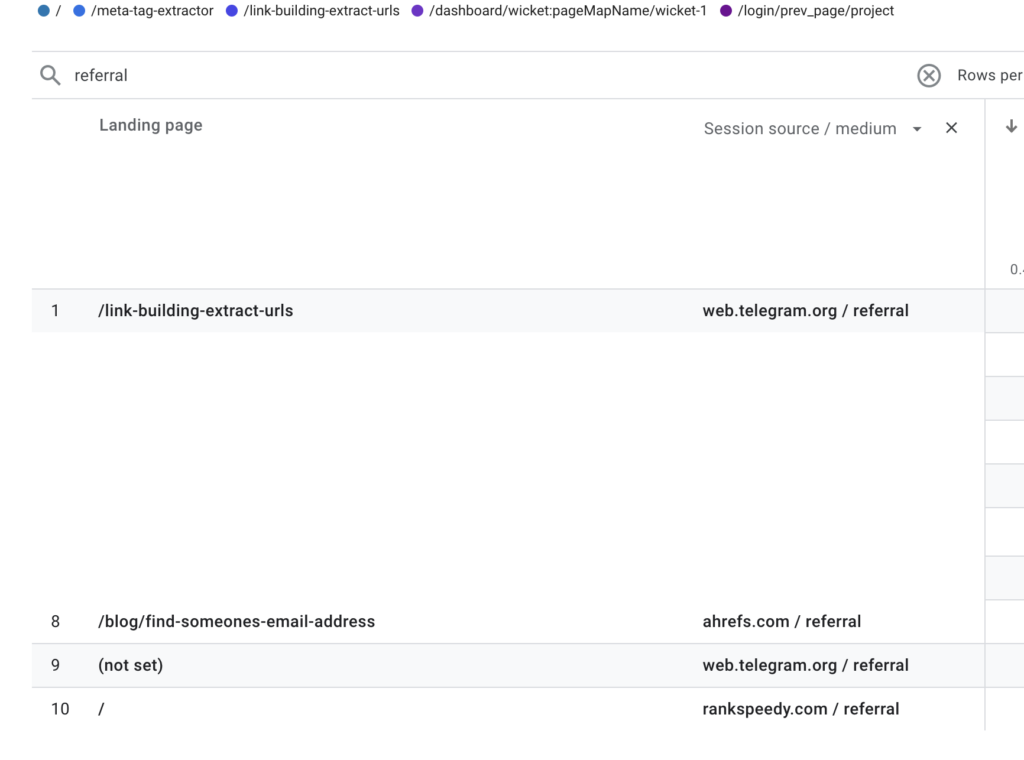
You can see that some blog traffic came in from Ahrefs, for instance.
6. Links Impact PageRank Weight
The documentation references a “pagerankWeight” associated with links, seemingly connecting the two.
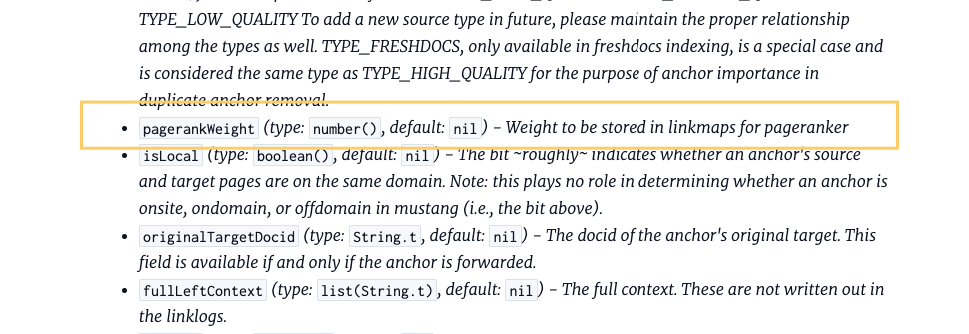
From Moz’s documentation, Domain Authority (DA) considers several metrics, including linking root domains. Similarly, Ahrefs uses Domain Rating (DR).
So, if you want to build links, metrics like DA or DR are a great way to gauge their impact.
When evaluating sites in BuzzStream, you can quickly look at a site’s Domain Authority or Domain Rating as pictured in the screenshot below:
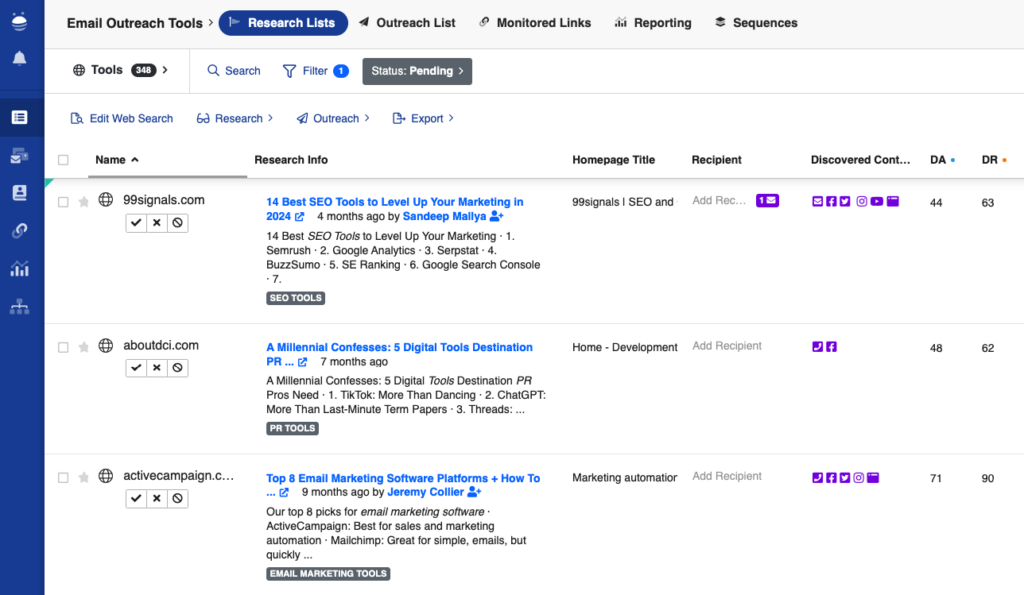
This allows you to focus only on sites with a high impact.
7. Link Freshness and History
Google’s documentation shows a link’s first and last seen dates are recorded.

Not only that but they are also updated with timestamps for freshness tracking.
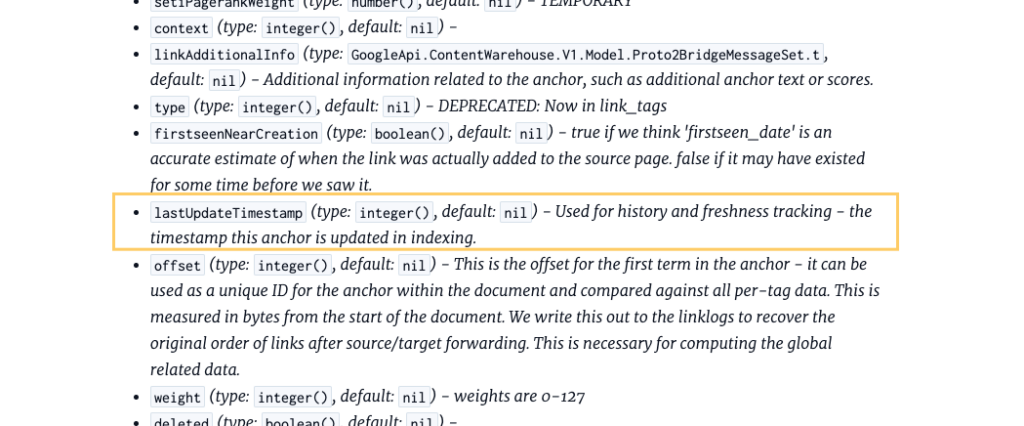
This suggests that newer and frequently updated backlinks, like high-end news sites, may be more valuable.
Or, as Mike King put it in his post: Look at that, I just made digital PR cool again!
(Mike, it was always cool 😎.)
Strategically, this means that older posts — specifically those commonly offered on link-buying sites and some resource pages buried deep within a site — are not helpful for link building.
I discussed this extensively in our link insertions post, as it is one of the main ways users place links on older content.
8. Clicks on Links
If a link is placed but no one sees it, is it valuable?
According to the documentation, no, not really.
Pulling from Rand Fishkin’s SparkToro post, he shared a quote from his original source: “Google has three buckets/tiers for classifying their link indexes (low, medium, high quality). Click data is used to determine which link graph index tier a document belongs to. See SourceType here, and TotalClicks here.”
So, if a site section gets little to no clicks, it is considered lower quality and devalues the link.
All of this points to the fact that you can get a link placed somewhere, but it doesn’t matter if no one sees it.
News sites get higher visibility, leading to more potential clicks.
Conclusions From the Leak
At the risk of beating a dead horse, I’ll repeat: everything from the above points to the fact that digital PR should be part of your link building strategy.
Relevant links gained from digital PR pretty much hit all of the things this documentation lays out as it relates to link building:
- Quality, authoritative sites
- Highly recognized authors
- Fresh content
- Highly visible content leading to more clicks
Many studies have shown for years that most of these are true, even if Google says otherwise.
So that brings me to my second conclusion: always test.
This leak has come out at a time of SEO uncertainty. The Helpful Content Update decimated many sites, for better or for worse. AI Overviews has just been sloppily launched, much to the chagrin of most Google users.
In times like this, instead of relying on what Google shows us, the best way to succeed is to test your own methods (or, like me, rely on the testing of much smarter people.)
As BuzzStream co-founder and CEO Paul May put it in his recent LinkedIn post:
“Google has shown repeatedly that you need to focus on what they do, not what they say.”
For example, sites like SearchPilot put out SEO-related A/B test case studies that I highly recommend checking out.
We have a whole section of research and data studies we’ve performed on the best ways to do digital PR.
Don’t let these necessarily inform your link building strategies; instead, consider them ways to support your thinking and make better decisions and cases to stakeholders or clients.

 End-to-end outreach workflow
End-to-end outreach workflow



 Check out the BuzzStream Podcast
Check out the BuzzStream Podcast







